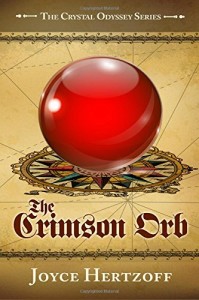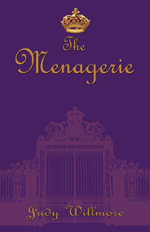Lynn Barker is a novelist, screenwriter, journalist, script doctor, and screenplay consultant. Her writing credits include scripts for the 1980s reboot of The Twilight Zone and Star Trek: Deep Space Nine, as well as articles in American Cinematographer and Written By, the magazine of the Writers Guild of America West. Her latest work is Futurus Rex, a Sci-Fi/Fantasy adventure novel co-authored with the late Dorothy (D.C.) Fontana. You’ll find Lynn on Facebook, IMDb.com, and her Amazon author page.
 What is your elevator pitch for Futurus Rex?
What is your elevator pitch for Futurus Rex?
There is a legend that King Arthur is not dead but only sleeping. He will awaken when Britain most needs him to lead a rebellion. Arthur wakes in a far future post-holocaust time, and the only one of his beloved knights to survive the long sleep with him is his nephew the traitorous Modred.
How did the book come together?
In the late 1980s, artist/writer/animator Budd Lewis brought to me and my longtime friend Dorothy (D.C.) Fontana his version of King Arthur’s return which he had originally wanted to release as a graphic novel. We were both intrigued and the three of us worked together to write a screenplay that was probably before its time in many ways. After Budd’s death in 2014, Dorothy and I crafted the outline for a novel adapted from our screenplay. Dorothy wrote a portion of it, I wrote a section, we traded and “edited” each other. Both got busy on other things and, when she died at the end of 2019, I started to finish the short novel still having to match her writing style, adding material etc. all while working as an entertainment journalist. I finished in the summer of 2022. The cover design is art by Budd Lewis. (For more of his cool art for his original graphic novel concept, go to the Photos tab on the book’s Facebook page.)
Tell us about your main characters and why you chose them to carry the story.
Well, there are a lot of them. Of course, we had to have Arthur awaken along with Modred. If you’ve got Arthur, you need his mentor/teacher Merlin in the mix. Now, who do they interact with in a far future British dystopia? We wanted a strong, interesting female lead to equal Arthur in bravado, brains and leadership potential but she appears on the surface to just be a popular, talented troubadour (or songsayer in our jargon) and Aliena was created. We needed a “bad guy” who, in this case, is a female techno-mage—we call them techno-wizards but only a few people are aware that their “wizardry” is mostly left-over science from before a great war—so Grand Wizard Karayahn and her army of mutants filled that bill.
Whew…we’ve also got a band of renegade highwaymen called the Foresters led by Connery Beige, a hot Robin Hood type who may or may not join the good guys in a rebellion against Karayahn. We added three beings from The Enchantment, a well-hidden land of the Fae (elves, fairies, trolls and other magical creatures) whose vast powers Karayahn covets and who also may or may not join a rebellion against her.
Lastly, I have to mention Enchantment resident Yaustis, a thween who appears on the outside to be a large dragon only with feathers and tiny wings instead of scales. He’s very intelligent and is instrumental in helping drive the story.
What was the most difficult aspect of world building for the book?
Two things: Bringing a far future, post massive-war Britain to life without letting that setting (or too much backstory) rule our narrative and secondly, introducing The Enchantment using only a few characters who make only a couple of visits back inside after coming out as “scouts” to see who has been trying to “pick their locks” so to speak and enter without an invitation. Note: This is a fast-moving Sci-Fi/Fantasy action adventure so we needed to concentrate on that. I will be writing a sequel because I learned that many readers wanted more story that would at least partially take them inside The Enchantment, etc.
What is the main setting and how does it impact the story and the characters?
We are in far future, post devastating-war Britain mostly around the London area and environs. There are ruins of our current 21st Century civilization: crumbled skyscrapers, wrecked museums and pieces of buildings and malls, and what is left of the underground everywhere. This impacts Arthur especially since he recognizes nothing of his realm. There is a debris belt circling the moon, etc. Even though Merlin assures him that he is in his kingdom, this contributes to his feeling like a complete stranger in a strange land and doubting his ability to aid the rebels. Aliena, Connery Beige, etc. are used to living in a semi-wasteland under awful conditions under a despotic ruler but they are sick of it and want their freedom.
 What roles did you and Dorothy (D.C.) Fontana play in developing the story?
What roles did you and Dorothy (D.C.) Fontana play in developing the story?
I covered this a bit in a previous answer, but after basing the screenplay on much of the character and story work of Budd Lewis, Dorothy and I re-worked it a bit for the novel. After her death, I continued to flesh out characters and story as needed. Until her death, we were equal partners in this. Our writing styles are quite similar although she wrote a less detailed style than I would do alone. I had to match her style for Futurus Rex but I won’t have to do that in the sequel which will be loosely based on notes we made for a possible continuing story.
How did you choose the title for the book?
It was always Budd’s title and we liked it…future king Futurus Rex. Worked for us.
What was the most rewarding aspect of putting this project together?
Continuing and finishing work that Budd and Dorothy always wanted to “get out there.” After just too long a wait to hear from some major publishers and getting encouraged by some then finally getting a rejection for various (never the same) reasons, I decided to self-publish. It had already been almost three years after Dorothy’s death and it was time.
How did your experience as a scriptwriter help you with writing Futurus Rex?
It both helps and hurts. For example, I’m great at writing exciting action sequences from doing so as a teleplay and screenplay writer. I also know how to not get bogged down with pages and pages of talking-heads dialogue or endless backstory that doesn’t move the story (or character development) forward. So did Dorothy. That is why Futurus Rex is a short, fast-moving action-adventure novel. However, I find that there are a lot of readers who love long talking-heads chapters and tons and tons of backstory and vast description of every crumbled ruin Arthur passes. You can’t please all the readers all of the time. However, on my own for the sequel, there will be more of that kind of thing without letting it become pointless. Thus, the sequel will be longer.
What do many beginning writers misunderstand about telling a story?
There is a ton! One of the things they must learn is to be a team player. You can’t let every word you write become precious to you. Publishers, editors and (in the film/television/streaming world) producers and story editors WILL touch your golden words or ask you to change things—and they will sometimes have some stupid reasons. You have to decide where your lines for battle are and when to comply…or also how to defend your point of view with grace and make a convincing argument.
Looking back to the beginning of your writing career, what do you know now that you wish you’d known then?
Not to be intimidated by any negative reactions to my writing (whether screenplay, teleplay or prose) but to learn from them and discard those that simply aren’t relevant. Also, to consider the source and motivations of those making negative comments just as you consider the motivations of those who butter you up with too many positive accolades that aren’t sincere.
What is the best encouragement or advice you’ve received in your writing journey?
You can do it. You’ve got the talent. Write something every day.
What writing projects are you working on now?
After a bit more marketing work with a PR person for Futurus Rex, I’m starting on the sequel before the end of January. Then, I have another supernatural/horror/film noir-ish novel I started that I want to get back to.
Is there anything else you’d like readers to know?
The novel is available on Amazon and Barnes & Noble as e-books and paperbacks.
 KL Wagoner (writing as Cate Macabe) is the author of This New Mountain: a memoir of AJ Jackson, private investigator, repossessor, and grandmother. Kat has a speculative fiction blog at klwagoner.com and writes about memoir at ThisNewMountain.com.
KL Wagoner (writing as Cate Macabe) is the author of This New Mountain: a memoir of AJ Jackson, private investigator, repossessor, and grandmother. Kat has a speculative fiction blog at klwagoner.com and writes about memoir at ThisNewMountain.com.







































